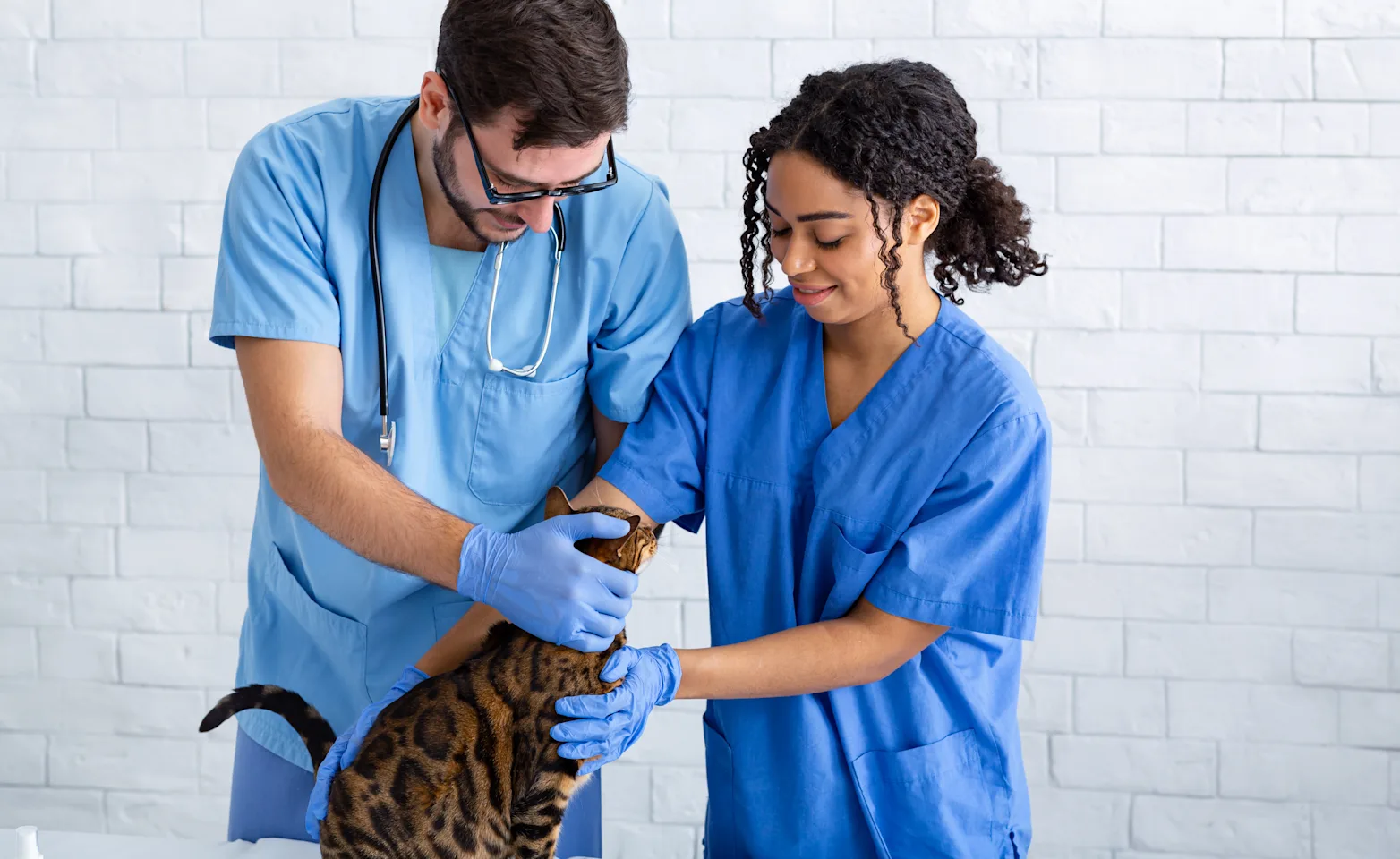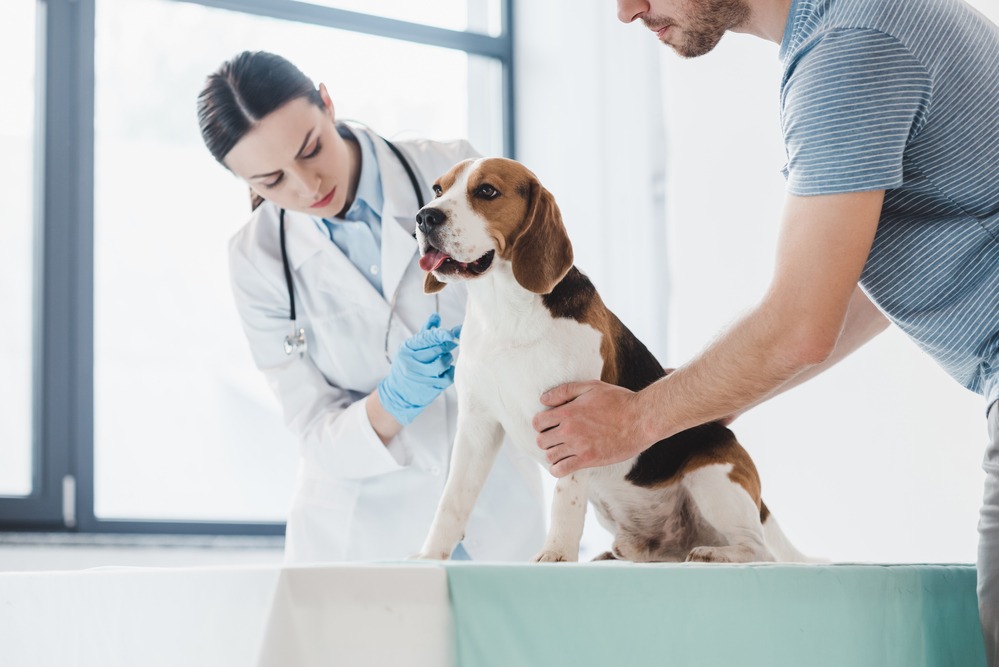What Sets an emergency vet bellingham Apart From a Regular Animal Hospital?
What Sets an emergency vet bellingham Apart From a Regular Animal Hospital?
Blog Article
Everything About Vet Surgery: Understanding the Significance of Specialist Look After Your Pets
Veterinary surgical treatment is an essential component of family pet health care. It includes various procedures, from regular elective surgeries to urgent treatments. Comprehending the details of these surgeries can aid pet dog owners make notified choices. The preparation, execution, and healing stages are vital for ensuring the well-being of animals. With appropriate knowledge, proprietors can browse the complexities of veterinary treatment. What aspects should be considered before a pet dog undergoes surgical treatment?
Kinds Of Veterinarian Surgeries
When an animal needs surgical intervention, comprehending the numerous kinds of vet surgeries can aid pet dog owners make educated choices. Vet surgical treatments can be extensively categorized right into three main kinds: elective, immediate, and emergency situation surgeries. Optional surgical treatments, such as spaying or neutering, are planned procedures that are not instantly dangerous. Urgent surgeries, like those for international body removal, have to be performed quickly however are not lethal in the moment. Emergency situation surgeries, such as those dealing with extreme injury or interior blood loss, are critical and need prompt attention.Additionally, surgical treatments can differ in intricacy, ranging from minimally invasive laparoscopic treatments to a lot more extensive open surgical treatments. Each kind of surgery lugs its own risks and recuperation procedures. Recognizing these groups enables pet dog owners to participate in significant discussions with veterinarians, bring about much better results for their precious pet dogs.
Getting ready for Your Pet dog's Surgical procedure
Getting ready for a pet dog's surgery entails a complete list to guarantee all basics are covered. Efficient interaction with the vet is important for understanding the procedure and any kind of necessary pre-operative steps - tplo surgery. Additionally, having clear post-operative treatment instructions will certainly help proprietors supply the most effective support for their recuperating animals
Pre-Surgery List Fundamentals
Guaranteeing a smooth surgical experience for a pet dog calls for mindful prep work and focus to detail. A pre-surgery checklist is necessary for pet proprietors to comply with. Validating the arranged surgical treatment day and time is essential. Proprietors ought to likewise validate that their pet dog has fasted according to the vet's guidelines, commonly for 8-12 hours prior to surgical treatment. Gathering required medical documents, consisting of vaccination background, is very important for the vet's testimonial. It is additionally advisable to prepare a comfortable room in your home for the animal's healing after surgical procedure. Owners should have a plan for transport to and from the veterinary clinic, making certain that the pet dog is protected and comfortable throughout the journey. Adhering to these actions can considerably enhance the surgical experience.
Interacting With Your Veterinarian

Effective interaction with the veterinarian is crucial for an effective surgical experience for animals. Proprietors must be prepared to review their pet dog's case history, consisting of any kind of pre-existing conditions, medications, and allergic reactions. This details aids the veterinarian evaluate risks and customize the surgical strategy accordingly. In addition, pet dog proprietors ought to ask inquiries concerning the procedure, anesthetic, and expected outcomes to assure they totally comprehend the process. Clearing up any type of questions can alleviate anxiety for both the pet dog and the owner. It is also vital to connect any type of behavior changes or issues observed in the pet dog leading up to the surgery. Inevitably, clear dialogue cultivates count on and cooperation, guaranteeing that animals receive the best possible treatment throughout their surgical journey.
Post-Operative Care Recommendations
After going over the surgical treatment with the vet, animal proprietors ought to concentrate on post-operative treatment instructions to assist in a smooth recuperation for their pets. These guidelines typically include keeping an eye on the surgical website for indicators of infection, such as inflammation or discharge. Pet dogs may need to be maintained tranquil and confined to avoid excessive activity that could interrupt healing. Pain administration is vital, so owners should adhere to the veterinarian's support on carrying out medicines. Additionally, dietary constraints may be recommended to avoid intestinal distress. Normal follow-up visits are necessary to assure proper healing and attend to any kind of worries. By sticking to these post-operative treatment guidelines, family pet owners can substantially add to their pet's recovery and overall wellness.
The Surgery Explained
The medical process for animals includes important actions that guarantee their safety and security and healing. Pre-surgery preparations are necessary for minimizing dangers, while post-operative treatment guidelines play a vital role in promoting recovery. Understanding these elements aids pet owners navigate the surgical experience better.
Pre-Surgery Preparations
Before a family pet undertakes surgery, several vital preparations have to take area to guarantee a risk-free and successful treatment. An extensive vet assessment is necessary to assess the pet dog's general health and wellness and identify any type of possible threats. This might consist of blood tests, imaging, or other diagnostics. The veterinarian will also go over anesthetic choices tailored to the family pet's details needs. Additionally, pet dog proprietors are normally advised to hold back food and water for a specified time before surgery to lessen the threat of difficulties throughout anesthesia. It is necessary for proprietors to give a total case history, consisting of any kind of drugs or allergic reactions, making certain the medical team has all essential details. Proper interaction and adherence to pre-surgery standards can significantly boost the result of the treatment.
Post-Operative Treatment Guidelines
Correct post-operative treatment is essential for making certain a pet's recuperation following surgical treatment. After the procedure, pets need to be checked carefully for any type of indications of difficulties, such as extreme blood loss, swelling, or uncommon habits. It is essential to follow the vet's directions pertaining to drugs, consisting of painkiller and prescription antibiotics. Pet dogs should be kept in a peaceful, comfy setting to reduce tension and promote healing. Limiting task is vital; short, leashed strolls may be required, yet jumping or running should be prevented. Routine follow-up consultations must be set up to examine the healing procedure. Furthermore, the medical site needs to be kept tidy and dry, with any kind of signs of infection reported to a veterinarian without delay. Sticking to these standards improves healing results.
Anesthesia and Discomfort Management
Efficient anesthesia and discomfort monitoring are crucial parts of veterinary surgical treatment, making sure that animals stay comfy and risk-free throughout the procedure. Vets assess each pet dog's private requirements, considering aspects such as age, weight, health status, and the kind of surgical treatment being performed.Anesthesia procedures typically include a combination of pre-anesthetic medicines, induction agents, and inhalant anesthetics, enabling for precise control over the pet's degree of consciousness. Tracking throughout surgery is important; vets continually observe important signs to address any kind of potential difficulties promptly.Pain management techniques may involve opioids, non-steroidal anti-inflammatory drugs (NSAIDs), and anesthetics, customized to the pet dog's specific scenario. This multifaceted approach helps decrease pain and advertises a smoother surgical experience. By prioritizing efficient anesthetic and pain monitoring, vet professionals enhance the general well-being of pets undergoing procedures, guaranteeing they get the highest standard of treatment.
Post-Operative Care and Recovery
Adhering to surgical treatment, the focus shifts to post-operative care and healing, which is necessary for making sure a pet dog's risk-free return to regular activities. Throughout this duration, family pets require a silent, comfortable atmosphere to aid recovery. Owners need to carefully check their pet dogs for any indicators of discomfort or unusual behavior.Veterinary standards frequently include specific instructions associated with medicine administration, wound care, and dietary adjustments. It is important to follow these suggestions to reduce difficulties and advertise recovery. Family pets might require to be restricted from energetic activities, such as running or leaping, throughout their recovery period (tplo surgery for dogs).Regular follow-up consultations with the vet allow for monitoring of the animal's progress and prompt changes to the treatment strategy. Supplying emotional assistance and companionship can also enhance an animal's recuperation experience, aiding to minimize stress and anxiousness. Overall, thorough post-operative treatment plays a considerable function in achieving a successful recuperation
Identifying Complications After Surgery
Just how can pet proprietors recognize problems after surgical treatment? Understanding of certain signs is essential for making sure the wellness of family pets throughout recuperation. Common indicators include too much swelling, redness, or discharge at the medical website, which might symbolize infection. In addition, consistent pain, suggested by yawping or reluctance to move, must trigger immediate interest. Changes in appetite or water intake can also indicate problems; a reduction in these behaviors may signify pain or distress.Moreover, family pet proprietors ought to check their pets for any unusual habits, such as sleepiness or difficulty breathing, as these can be indications of severe issues. Vomiting or diarrhea following surgical treatment may require urgent vet evaluation. Identifying these issues early can greatly influence an animal's recovery process, highlighting the value of vigilance and punctual communication with a vet for any kind of concerning symptoms.
The Duty of Vet Professionals in Surgical Treatment
Vet professionals play a crucial duty in making sure the security and success of surgeries for pets, specifically adhering to surgical procedure when keeping an eye on and care are vital. These experts consist of vets, vet service technicians, and assistance team, every one of whom contribute specialized abilities to the medical process.Before surgery, vets conduct extensive examinations to examine the animal's health, ensuring that any underlying conditions are handled. Throughout the treatment, the surgical team provides anesthetic, keeps sterile environments, and keeps an eye on essential indications, all essential for reducing risks.Post-operative treatment is equally significant; vet professionals observe for complications, manage discomfort, and guide owners on healing practices. Their experience allows them to recognize very early signs of distress or infection, making sure prompt intervention. Ultimately, the collective initiatives of veterinary experts in surgical treatment foster a safe atmosphere, promoting the well-being of pet dogs throughout the surgical journey.

Frequently Asked Concerns
How Do I Choose the Right Veterinary Specialist for My Pet?
Picking the best veterinary doctor involves researching certifications, checking out evaluations, and reviewing the facility's setting. It is important to assess the doctor's experience with specific procedures and their communication design when choosing.
What Prevail Misconceptions About Vet Surgeries?
Common false impressions concerning vet surgeries include beliefs that they are always dangerous, unnecessary, or only for emergencies. Lots of family pet owners ignore the advantages of preventative treatments and the ability entailed in veterinary medical care.
Just How Much Will My Pet's Surgery Expense?
The price of a pet dog's surgical treatment can vary significantly based upon elements such as the kind of procedure, the veterinarian's experience, and geographic location (emergency vet near me). Commonly, expenditures range from a few hundred to a number of thousand bucks

Can My Animal Consume Before Surgical Treatment?
Before surgical treatment, it is generally encouraged that family pets refrain from eating for a details period. This fasting helps in reducing the danger of complications during anesthetic. Proprietors need to consult their veterinarian for precise guidelines customized to their animal's needs.
Suppose My Pet Has Pre-Existing Health Conditions?
When a pet has pre-existing wellness problems, it's essential for the click here veterinarian to assess these aspects prior to surgical treatment. This analysis assurances ideal precautions are taken, reducing risks and maximizing the pet dog's general safety during the procedure.
Report this page